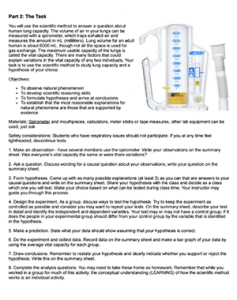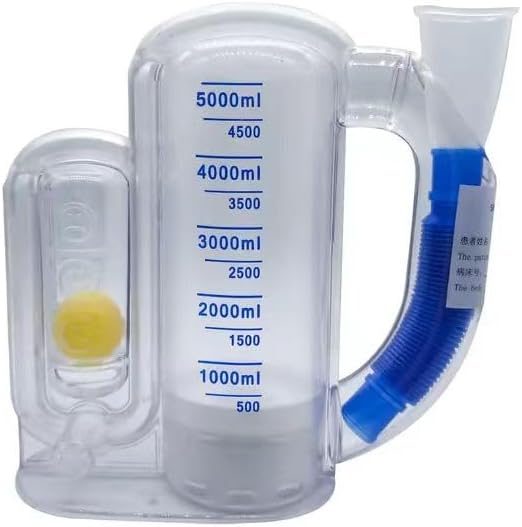
This activity was designed for advanced students as a way to explore how scientists investigate problems. It is technically a “scientific method” exercise where students must design their own experiment, gather data, and develop a logical summary to answer the experimental questions.
Students must develop their own causal questions about what biological factors affect a person’s lung capacity and develop a testable hypothesis. Students then test the hypothesis that chest circumference affects lung capacity by using a respirometer.
Students must identify causal relationships, dependent and independent variables, and explain how data gathered suggest (or not) a causal relationship between lung capacity and the size of chest.
They must also reflect on how the experiment could be improved or how the data may not be valid based on sample size. Teachers could also add statistics by asking students to include standard error measurements in the graph.
Respirometers can be ordered from amazon (they are fairly cheap) and can be shared in small groups. Use alcohol pads to clean mouthpieces. Chest size is measured with tape measures.

Grade Level: 10-12
Time Required: 45-90 minutes
HS-LS1-2 Develop and use a model to illustrate the hierarchical organization of interacting systems that provide specific functions within multicellular organisms
8 Practices: 1. Asking questions (for science) 2. Developing and using models 3. Planning and carrying out investigations 4. Analyzing and interpreting data 5. Using mathematics and computational thinking 6. Constructing explanations (for science) 7. Engaging in argument from evidence 8. Obtaining, evaluating, and communicating information

